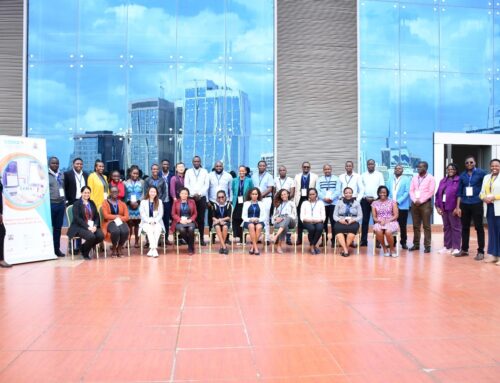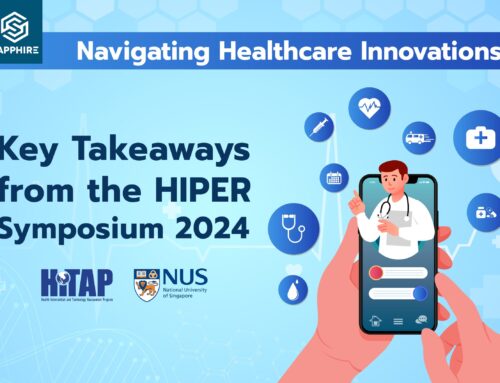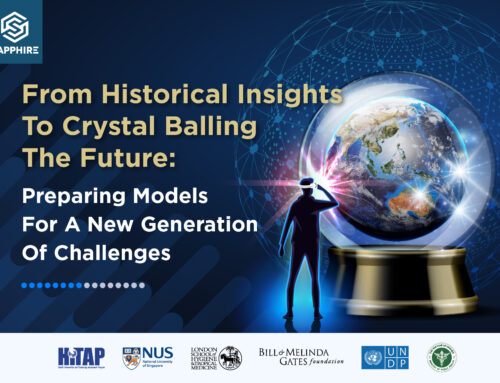On January 28, 2020, PMAC 2020: Accelerating the Progress Towards UHC officially started with side meetings, with one of the very first ones hosted by Health Intervention and Technology Assessment Program (HITAP), titled “Attain & Sustain Health Gains: Incorporating Value-For-Money in the Universal Health Coverage (UHC) Dialogue”. This session explored the use of health technology assessment (HTA) in the context of achieving UHC with interactive activities and presentations on a study evaluating the value-for-money of having HTA agencies from Dr. Alec Morton (University of Strathclyde), HTA use in ASEAN countries and in Africa, and case studies of using HTA for UHC from the Philippines and Kenya.
As someone coming from an academic setting, it was surprising to see many policy-makers, decision-makers and different stakeholders in the audience from across the world and using HTA in different capacities. Typical conferences would see many stakeholders from academia and industry, but lack end- users and decision-makers. Most of the audience was knowledgeable about HTA and UHC through the activities led by Sven Engels (HITAP) on Menti where the concepts of trade-offs and use of economic evidence were demonstrated. It was my first time using Menti, and I thought it was very effective at interacting with the audience/speaker.
The first presentation on Evaluating the Value of a Real-World HTA Agency (EVORA) was a three-part study (consisting of literature review, simulation model, and qualitative interviews) conducted in collaboration between researchers from HITAP and the University of Strathclyde. The most interesting result was from the simulation study where a world with a HTA agency was compared to a world without an HTA agency (i.e. decisions were not based on systematic evidence evaluation), and HTA agencies were shown to reduce healthcare costs and improve health benefits, alluding to it being a dominant strategy. While the results have face validity, an important point to consider is whether or not we are undervaluing HTA agencies by only considering their report outputs. To answer this question, it would help to understand how much the HTA report influenced a particular decision, and the consequent changes in health outcomes. I’m looking forward to seeing this study published to understand the intricacies and applicability of this simulation model to apply to different phases of HTA agencies.
The other study that really stood out to me was the survey conducted in ASEAN countries on the use of HTA. It was eye-opening and interesting to see the variability of HTA practices and considerations across the ASEAN country. For example, I learned that Myanmar does not consider safety and efficacy in their HTA processes, and some countries do not consider social or ethical considerations in their HTA. It was also very interesting to see that many of these ASEAN countries are aiming towards achieving UHC with commitment to using HTA as a tool. It was interesting to see the Philippines’ and Kenya’s case studies of achieving UHC through building HTA capacity. This session was great in tying together the potential value of establishing HTA capacity, and the potential for HTA in ASEAN and African countries.
I also attended a parallel session co-hosted by National University Singapore (NUS), International Decision Support Initiative (iDSI) and the World Health Organization (WHO), titled “Assessing health interventions for a Fair, Efficient and Sustainable Universal Health Coverage (UHC)”. I found the opening remarks made by Professor Yik Ying Teo thought-provoking as he mentioned that while UHC aims to achieve affordability, accessibility, quality and sustainability, there will inevitability need to be a compromise in order to achieve most if not all of these components. In some form or other, someone will always be paying for healthcare (ex. government, private insurers, or employers), and there will always be trade-offs. However, efficient decisions can be made through use of metrics and systematic processes such as health technology assessment (HTA).
Dr. Chhea Chhorvan from the National Institute of Public Health in Cambodia presented the gaps in the Cambodian health system, and the disconnect between what is currently listed in the benefits package, and what is actually offered in health facilities due to a weak public health system. UHC in Cambodia is currently in its infancy and they aim to achieve complete UHC by 2025. While it seems like an ambitious goal, it can be realistic given the great network PMAC provides for policy-makers and UHC champions from the ASEAN countries to connect and learn from each other. However, Dr. Chhorvan mentioned that conducting HTA in Cambodia currently would be an inefficient use of resources given their weak public health system.
Other examples of assessing health interventions for sustainable UHC were presented by Dr. Stephanie Anne Lim from Epimetrics (the Philippines), and Dr. Walaiporn from the International Health Policy Program (Thailand). Dr. Walaiporn pointed out that upstream and downstream evidence should equally be considered for policy processes and implementation, and that monitoring service coverage can help with equity considerations. Local assessment is also extremely important in planning for UHC. Dr. Erica Di Ruggiero from the University of Toronto (Canada) described the implications of differing assessment criteria that global funds/donors use to allocate resources on the international level. As an academic, it was interesting to hear thoughts from different perspectives on some of the potential solutions (e.g. better monitoring and evaluation, different types of evidence not yet used) to ensure successful governance and accountability for UHC decision-making. Dr. Di Ruggiero also brought up a good point about data and how much of the world is becoming digitized, while questioning about the countries that are unable to digitize their information. Will they fall behind in the global action to achieve UHC? These are some other non-health factors from different sectors that can be useful in achieving fair and sustainable UHC.
Overall, this parallel session really emphasized the need for monitoring and evaluation, and the need to consider multi-sectoral collaborations to help achieve fair, efficient and sustainable UHC. In the future, can we proactively do a better job in stimulating conservations about multi-sectoral collaboration to improve health, in particular for non-communicable diseases? It seems that the current model only promotes multi-sectoral collaborations during catastrophic events such as the current n-CoV outbreak.
As a PhD student from Canada, I have never attended PMAC or this kind of UHC Forum. This was a wonderful experience for me to learn more about the use and impact of HTA to achieve UHC in other parts of the world. Throughout this session, I realized that HTA can be such a small part of UHC, but has the potential to create sound evidence for countries without a health benefits package, so that one day, all citizens may not have to consider the trade-offs of seeking healthcare and their financial wellbeing.






